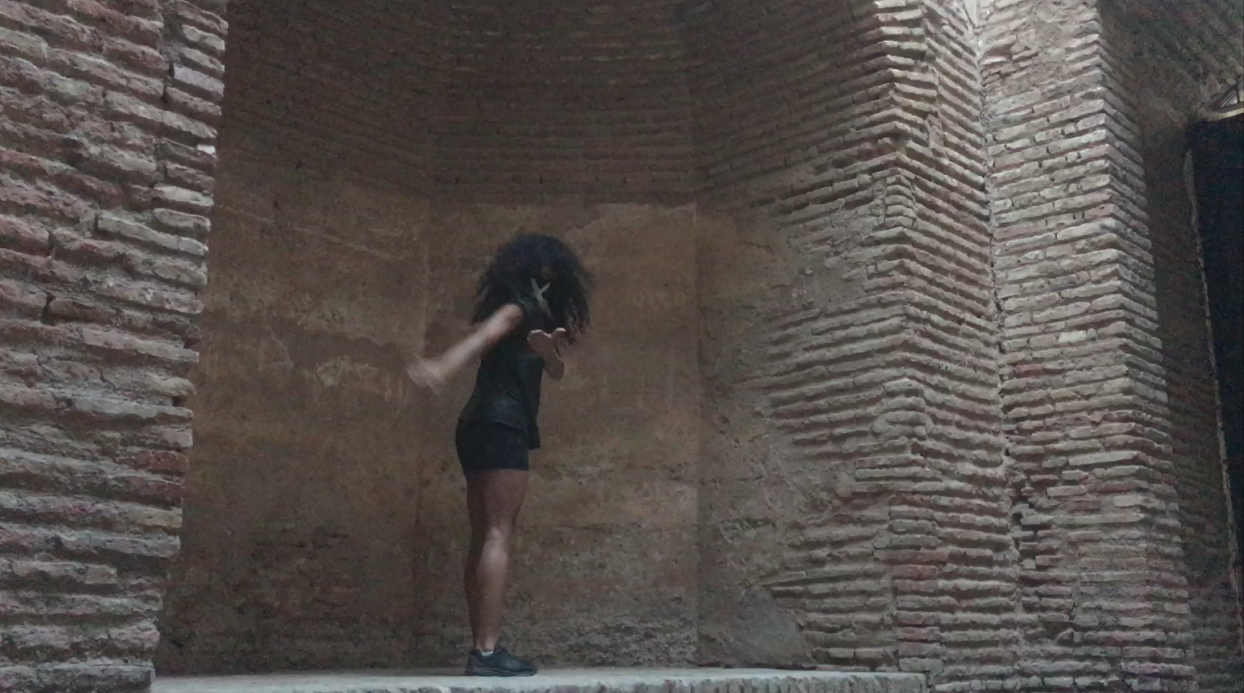3 movimientos: i. palma y plátano ii. caña de azúcar iii. sangre y tabaco
& Y (Do You Think I Speak Spanish)? 3 Movements: i. Palm And Plantain ii. Blood And Tobacco iii. Sugar Cane
Performance, 3-channel video, original sound composition
2017





3 actions in locations with direct ties to the botanical protagonists of the Columbian Exchange in the port city of Málaga, Spain.
The movement- an uprooting- took cues from syncretic ritual and popular dances in the Caribbean -from Bomba y Plena to Salsa to Reggaeton. [and its continued consumption throughout the globalized world.]
This video installation is accompanied by an experimental score foregrounding the ebb and flow of music from Spain to the Caribbean and back via the flow of human bodies, both free and enslaved.
From Puerto Rico Negrx (exhibition wherein this work debuted in 2023) curators María Elena Ortiz y Marina Reyes Franco: La pieza ¿Y X K (tu crees que yo hablo español)? contempla la explotación inherente en la historia agrícola y mercantil entre el Caribe y España. Filmada en tres lugares con vínculos a la colonización de las Américas en la ciudad de Málaga, las secciones de la obra hacen referencia a la cosecha de monocultivos y legados de la esclavitud. Córdova se inspira en movimientos políticos y elementos de las vidas negras, tales como rituales sincréticos y música afrocaribeña, para comentar sobre el consumo globalizado de esta música. La canción "Guajira” [aquí cantada por la cantaora Lourdes Gálvez del Postigo] que cierra la obra, se origina en la tradición de Los Cantes del Piyayo, que fusiona el flamenco con influencias caribeñas a partir de 1898. En respuesta, Córdova crea su propio remix de la canción , incorporando extractos alterados de música de bomba, plena, y producción clásica de reguetón de los años 90.
The piece ¿Y X K (tu crees que yo hablo español)? contemplates the exploitation inherent in the agricultural and commercial history between the Caribbean and Spain. Filmed in three locations with links to the colonization of the Americas in the city of Malaga, sections of the work reference the harvest of monocultures and the legacy of slavery. Córdova draws inspiration from political movements and elements of Black life, such as syncretic rituals and Afrocaribbean music, to comment on the globalized consumption of this music. The song "Guajira," [here sung by flamenco singer Lourdes Gálvez del Postigo] which closes the work, originates in the tradition of Los Cantes del Piyayo, which fused flamenco with Caribbean influences beginning in 1898. In response, Córdova creates her own remix of the song, incorporating altered elements of bomba music, plena, and classic reggaeton production from the 90s.